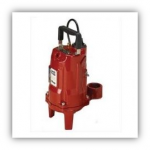Things You Should Know About Chemical Water Pumps
Chemical water pumps are categorized based on their construct and operating principles. The most common types of chemical water pumps are:
Centrifugal Pumps: These are the most common types of chemical water pumps. They convert rotational energy into kinetic energy, which further transfers fluid to the discharge outlet. This type of chemical water pump is reliable and cost-effective, making it useful for low-to-medium viscosity liquids with low solid content.
Diaphragm Pumps: These positive displacement pumps use a flexible diaphragm to move chemicals. They move the diaphragm back and forth, which creates a vacuum and moves liquid into the pump chamber before pushing it out. These pumps are suitable for transferring high solids content and for applications that need gentle pumping.
Peristaltic Pumps: These pumps use a flexible tube and rollers to move liquids. They squeeze the tube, creating a vacuum that draws fluid into the pump before finally pushing it out. They are suitable for transferring abrasive and viscous liquids or for applications that need accurate dosing.
Pump Materials and Compatibility
There are two categories of chemical-compatible material for these pumps:
- Metal: These are suitable for slurries and abrasives. These metals typically include alloy C, cast iron, aluminium, and 316 stainless steel.
- Non-Metal: These solid and lightweight materials include acetal, polypropylene, Kynar nylon, conductive acetal, and conductive polypropylene.
Considerations for Choosing Chemical Water Pumps
Chemical Compatibility
Chemical compatibility is the first and most important factor to consider. The pump’s material should be compatible with the fluid it’s intended for. This is because most chemicals are prone to corrosion, making it important to choose a chemical-friendly material. It’s best to check chemical compatibility charts and consult with experts.
Flow Rate and Pressure Requirements
Figuring out the flow rate and pressure requirements helps determine if the pump is working efficiently. Accordingly, you can take the right action to improve your pump’s performance. It’s very easy to calculate the flow rate. Suppose you want to transfer 300 litres of liquid every 30 minutes. So, the pump has to move 300/30 = 10 litres per minute or 0.167 litres per second. This is the flow rate you want to achieve.
The other two factors influencing the pump’s performance are:
- Pipe diameter: Pipe diameter is crucial to ensure the desired flow rate. It’s also crucial for maximizing pump efficiency and energy consumption.
- System design: As mentioned above, the system’s design also affects the performance and efficiency of pumps.
Safety Considerations
It’s very important to pay attention to safety features in chemical water pumps, such as leak detection and containment mechanisms. These loopholes can cause injuries from parts, fire from leaks or excessive heat, or equipment damage from overpressure. So, make sure you follow safety guidelines and regulations in chemical handling.
Installation and Maintenance Tips
Proper Installation Procedures
- Carefully read and follow manufacturer guidelines in the instruction manual.
- Use a rigid foundation that is clean of debris.
- Install the base, the pump, and the driver on the foundation.
- Add oil to the bearing housings and check the initial alignment.
- Ground the base to the pump’s foundation.
- Install piping by following manufacturer guidelines.
- Do the second alignment check and make the necessary adjustments.
- Do the rotational check and verify pump settings.
- Install ancillary and coupling.
- Start the unit and check for pressures, temperature, flow, noise, and vibration.
Regular Maintenance Practices
- If unused for a long time, disassemble your chemical pump and check whether the internal parts are damaged. If damaged, address the issue in a timely to keep the pump from failing during use.
- Regularly inspect the connection between the pump and the pipe to avoid potential leakage.
- Regularly apply lubricating oil to rotating parts.
- Use pressure gauges and flow meters to ensure the right pressure and flow rate in your chemical water pump.
- Use appropriate water filters to avoid damage to the pump and ensure their longevity.
Troubleshooting Common Issues
Pump Cavitation
Pump cavitation is the accumulation of bubbles around the impeller. This forms in liquids of any viscosity transported through the pump. Cavitation often results in a pump’s performance deterioration, noise, and mechanical damage.
In order to avoid pump cavitation, increase the pressure upstream from the impeller. If possible, reduce the pump’s temperature and increase the liquid level around the suction.
Seal Failure
Dry pumps for long periods of time can result in heat cracks and melted or burned seals. Seal failure further results in fluid leakage due to excess pressure. Make sure you provide proper lubrication to seals and all other rotational components of the pump. In addition, use the right mechanical seal to avoid potential pump seal leaks.
Conclusion
Hopefully, this blog informs you about choosing, installing, and maintaining chemical water pumps properly. Make sure you also pay proper attention to safety features to avoid any direct or indirect injury to the users and any potential damage to the pump.












